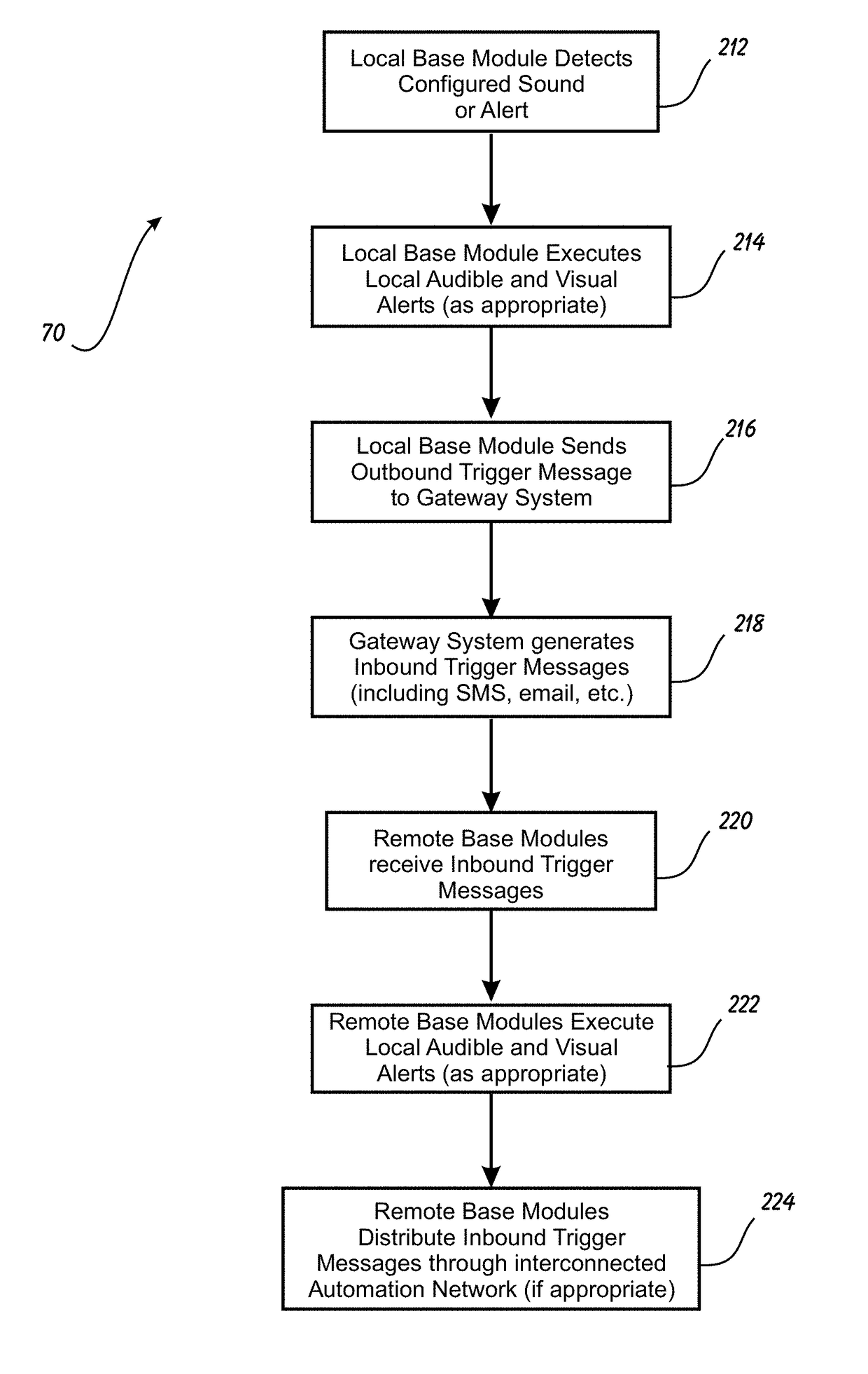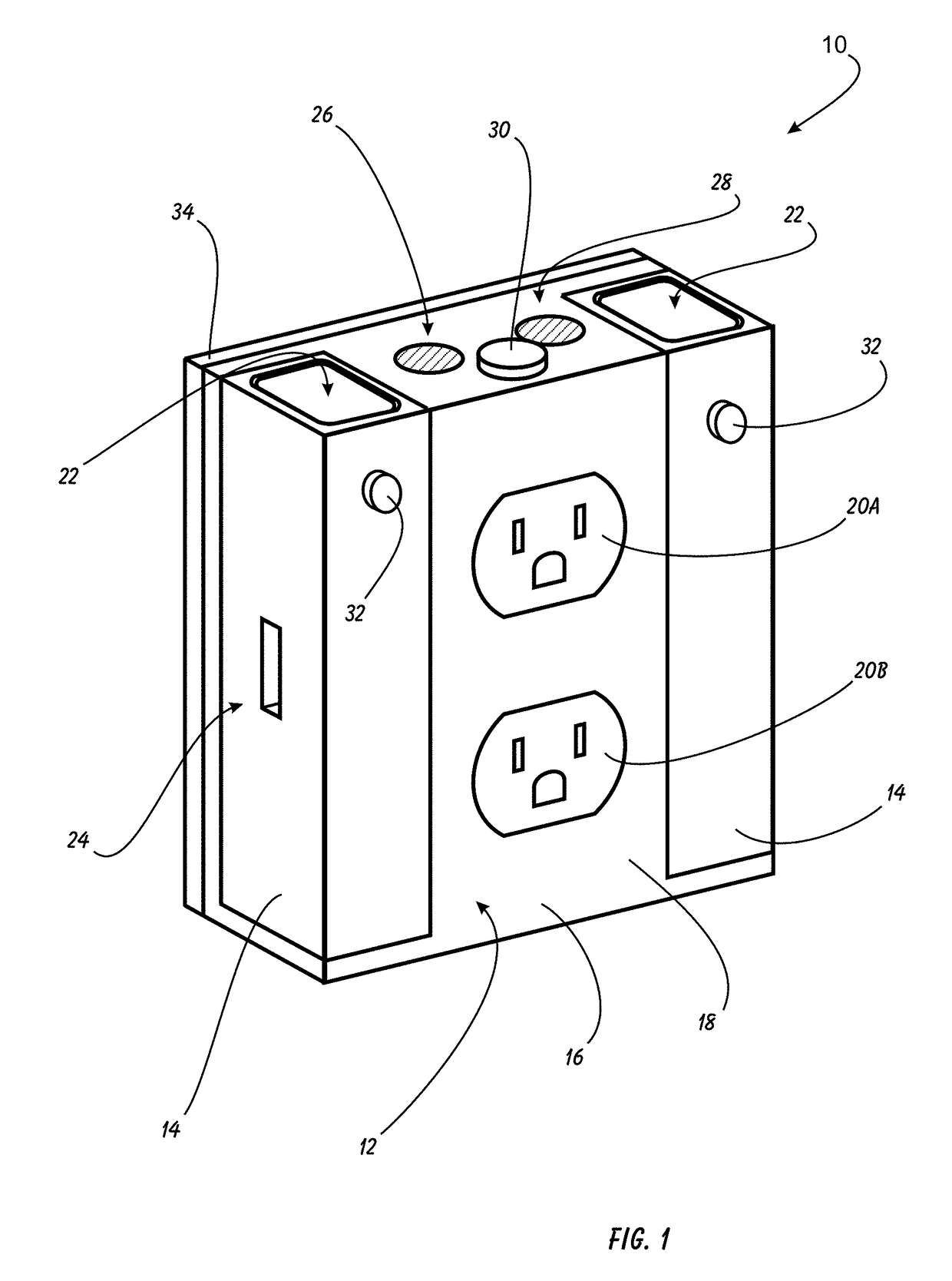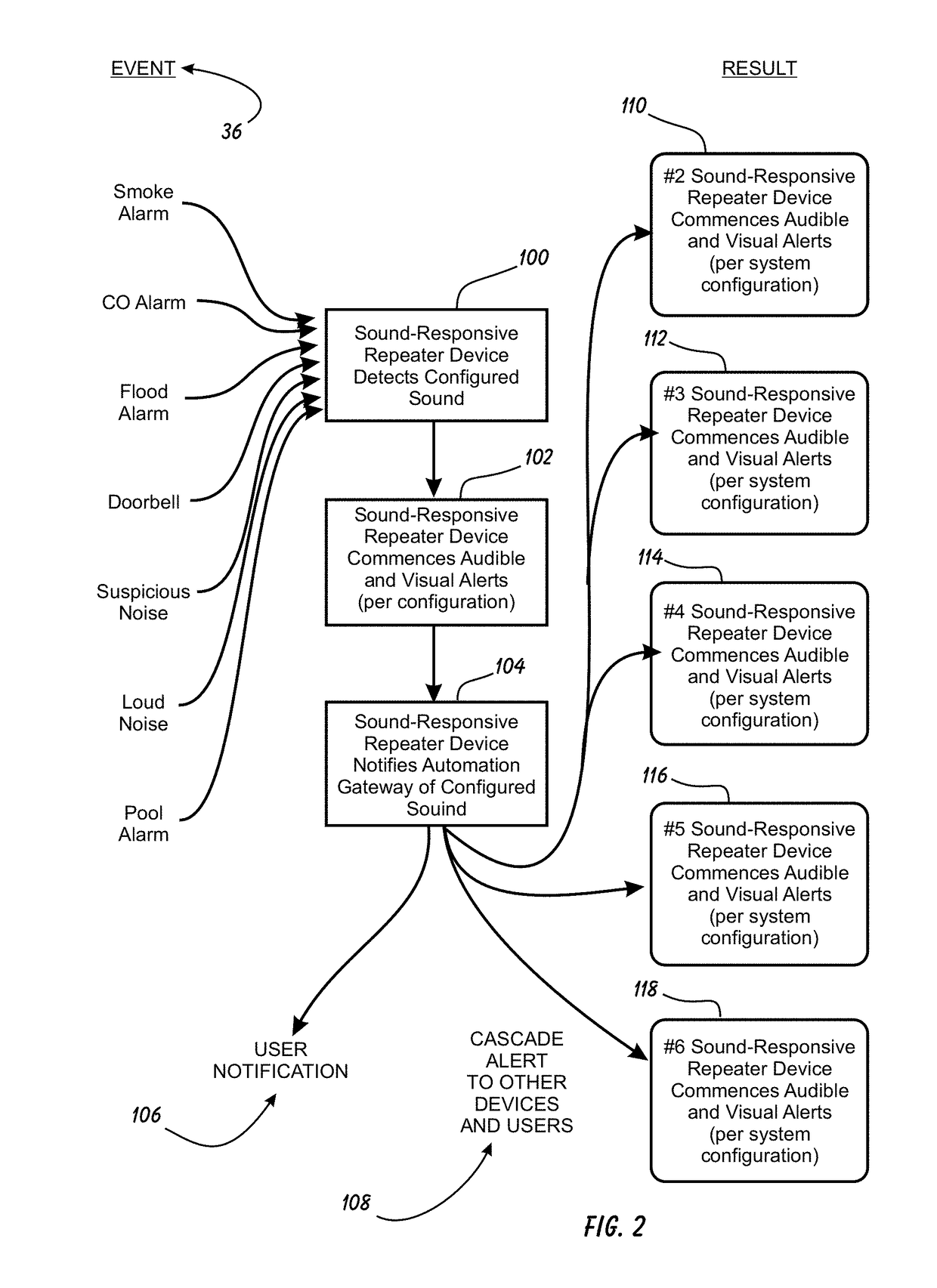Sound-responsive Repeater Device and System
a repeater device and repeater technology, applied in the field of wireless automation systems, can solve the problems of legacy sensors and alarms, inability of the industry to standardize the protocol for the different devices to communicate with each other, and inability to integrate with existing inconnected detectors/alarms
- Summary
- Abstract
- Description
- Claims
- Application Information
AI Technical Summary
Benefits of technology
Problems solved by technology
Method used
Image
Examples
Embodiment Construction
[0020]The following description is provided to enable any person skilled in the art to make and use the invention and sets forth the best modes contemplated by the inventor of carrying out his invention. Various modifications, however, will remain readily apparent to those skilled in the art, since the generic principles of the present invention have been defined herein specifically to provide a Sound-responsive Repeater Device and System.
[0021]The present invention can best be understood by initial consideration of FIG. 1.1 FIG. 1 is a perspective view of a preferred embodiment of the sound-responsive repeater device 10 of the present invention. The device 10 is intended to plug into a standard duplex household AC outlet (including versions compatible with worldwide conventions). In its least capable configuration, it will “listen” and will create a user-configured output whenever a pre-configured sound is detected by the device 10. This could be as simple as the device 10 creating...
PUM
 Login to View More
Login to View More Abstract
Description
Claims
Application Information
 Login to View More
Login to View More - R&D
- Intellectual Property
- Life Sciences
- Materials
- Tech Scout
- Unparalleled Data Quality
- Higher Quality Content
- 60% Fewer Hallucinations
Browse by: Latest US Patents, China's latest patents, Technical Efficacy Thesaurus, Application Domain, Technology Topic, Popular Technical Reports.
© 2025 PatSnap. All rights reserved.Legal|Privacy policy|Modern Slavery Act Transparency Statement|Sitemap|About US| Contact US: help@patsnap.com



